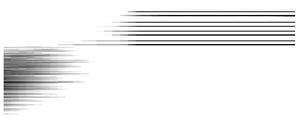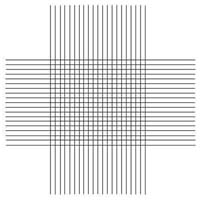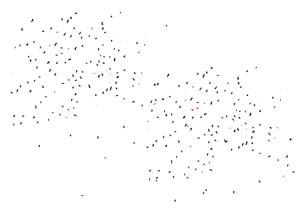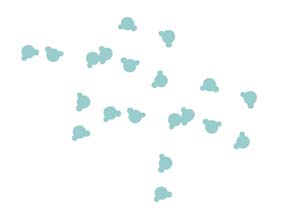|
Nothingness
[2008-12-12]
animation: Lisa Roberts
Sydney 2008
voice: David Carter
Victoria, Australia 2008
When I left high School
I lived in my grandmother's house.
She lived close to the university
where I was studying arts.
Her house was a quiet place to work.
Another student lived with us,
David Carter, who was writing a thesis
after wintering in Antarctica.
He had lived for months on a glacier
collecting data to analyse.
Last year we met up again
and he talked about Antarctica.
He spoke of the silence he found there
and how he valued that still.
He reminded me of how we first met,
nearly 40 years ago,
in the icy silence
of my grandmother's house.
David's words reminded me
of the silence I found briefly
in Antarctica.
It was out of this world.
As David described the nothingness
that is Antarctica,
his back straightened
and his eyes looked skywards
while his arms described a horizontal line.
These lines of motion expressed through his body
suggested the shape of a cross.
The dots, lines and shapes
of the animation, Nothingness
reflect my encounters with David Carter.

The lines are layers of data
held within the ice
and layers of human memory
held within our minds.

The crossing lines are the spaces
where one can sense the reality
of no line between our selves (verticals)
and the places we occupy (horizontals).
The cycling vertical and horizontal lines
were suggested by a memory
of seeing Bea Maddock's artist's book,
To the Ice (1991).
Lynne Andrews describes these lines in
Antarctic Eye: The Visual Journey (2007):
Each day was represented
by a number of horizontal and vertical strokes,
which referred to the stage of the journey.
The first has 40 horizontal strokes,
mid-journey there are 20 horizontals
and at the end
there are 40 verticals (p. 167).
I remembered how
Maddock's lines moved
opposite each other
as the pages turned.
Then I found them mesmerizing.
Now they suggested feeling
tranquilized by silence in the ice.

The dots are wild snow drifts
that settle to build the icecap,
and unsettle human minds.

The blue forms are molecules
of H20 (water).
Cycling between
melting and freezing,
they represent the regeneration
of the natural world.
David said he has experienced
the same sense of nothingness
that he found in Antarctica
in other desert places in Australia.
He posted me an article
that included some lines
he thought I might find interesting.
The lines are from a review
of a book by Sara Maitland:
A Book of Silence:
...passages of vivid recollection:
the sudden feeling once,
on some mountainside,
of being physically connected
to everything;
waking on a night
of swarming stars;
watching the desert dawn;
being transfixed
by Rothko's paintings:
"dense pools of silent energy".
out of this world
The Economist, November 15th 2008, p. 89
Author unknown
| 